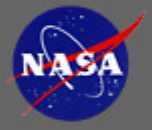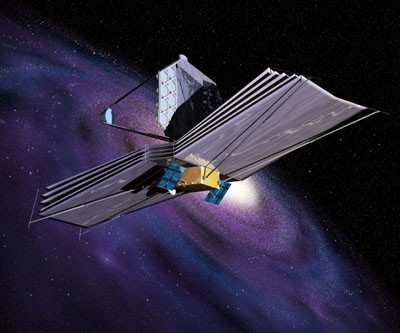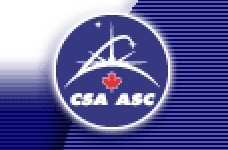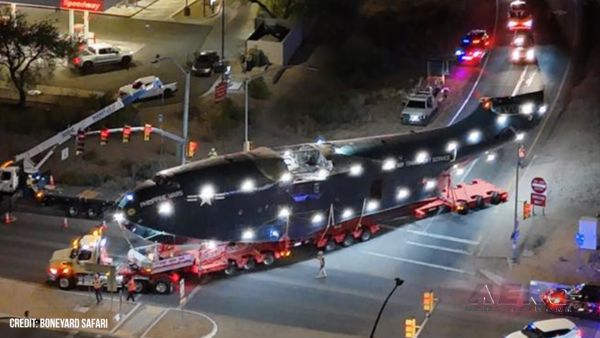Canadian Space Agency Will Provide Sensor On James Webb Space
Telescope
 At a ceremony held Monday at
NASA Headquarters in Washington, NASA Deputy Administrator Shana
Dale and Canadian Space Agency (CSA) President and Chief Executive
Officer Laurier J. Boisvert signed the official agreement that
defines the terms of the agencies' cooperation on the James Webb
Space Telescope.
At a ceremony held Monday at
NASA Headquarters in Washington, NASA Deputy Administrator Shana
Dale and Canadian Space Agency (CSA) President and Chief Executive
Officer Laurier J. Boisvert signed the official agreement that
defines the terms of the agencies' cooperation on the James Webb
Space Telescope.
According to the agreement, NASA will be responsible for the
overall management and operations of the mission and will build the
spacecraft, the telescope, and the platform that will host the
instruments.
"We're delighted to have the Canadian Space Agency's
participation on the James Webb Telescope," said Dale. "This unique
telescope is a wonderful example of international cooperation, and
Canada is a key partner in this next major step to discover more
about the origins of the cosmos."
The Canadian Space Agency plans to provide the fine guidance
sensor instrument, used for locating and maintaining a fixed
pointing on a guide star. This instrument will provide the
observatory with the stability necessary for taking sharp images
with the telescope. The agency will assist in the operation of the
James Webb Space Telescope and related facilities and arrange for
participation of astronomers from the Canadian science team in the
observation program.

"Canada's collaboration on the James Webb Space Telescope,"
Boisvert said, "strengthens our outstanding and longstanding
partnership with NASA and positions Canadian science and technology
in the forefront of space exploration."
Although optimized to operate over a different range of
wavelengths, the James Webb Space Telescope is considered to be the
successor to the Hubble Space Telescope. Its launch is targeted for
2013, and the telescope is designed to operate for at least five
years.
The telescope is a mission of international cooperation among
NASA, CSA and the European Space Agency to investigate the origin
and evolution of galaxies, stars and planetary systems.
 At the heart of the
observatory is a large telescope whose primary mirror is more than
two and a half times larger than that on Hubble, providing a
relatively large field of view. The mirror for the James Webb Space
Telescope is 21.3 ft in diameter; Hubble's mirror is 7.9 ft. in
diameter.
At the heart of the
observatory is a large telescope whose primary mirror is more than
two and a half times larger than that on Hubble, providing a
relatively large field of view. The mirror for the James Webb Space
Telescope is 21.3 ft in diameter; Hubble's mirror is 7.9 ft. in
diameter.
A set of four sophisticated instruments, including the fine
guidance sensor, will combine superb imaging capability at visible
and infrared wavelengths with various spectroscopic modes to learn
about the chemistry and evolution of the objects populating our
universe.
The telescope will operate considerably outside the Earth's
atmosphere at a point in deep space four times farther than the
moon's orbit, in the direction opposite to the sun. This area,
located approximately 1 million miles away, is known as the second
Lagrange point. From this location, the observatory is expected to
enable new scientific discoveries about the cosmos, just as Hubble
does.
 ANN's Daily Aero-Term (05.18.25): Flight Recorder
ANN's Daily Aero-Term (05.18.25): Flight Recorder Aero-News: Quote of the Day (05.18.25)
Aero-News: Quote of the Day (05.18.25) Classic Aero-TV: ELA Aviation Sports New Vertical Takeoff Gyroplane
Classic Aero-TV: ELA Aviation Sports New Vertical Takeoff Gyroplane Airborne 05.19.25: Kolb v Tornados, Philippine Mars, Blackhawk Antler Theft
Airborne 05.19.25: Kolb v Tornados, Philippine Mars, Blackhawk Antler Theft Klyde Morris (05.16.25)
Klyde Morris (05.16.25)





